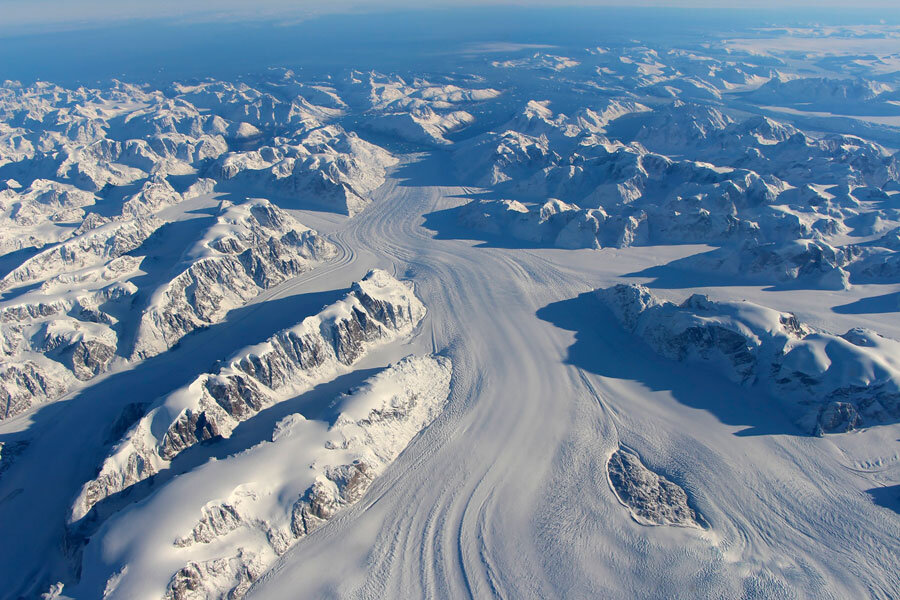What's melting Greenland's ice sheet? Night clouds, say scientists.
Clouds play an important role in melting Greenland’s ice sheet, say scientists.
A team of scientists from the University of Leuven in Belgium have found that clouds are raising the temperature of the Greenland Ice Sheet by up to 3 degrees, contributing to almost 30 percent of the sheet’s melting, according a study published Tuesday in the journal Nature Communications.
“With climate change at the back of our minds, and the disastrous consequences of a global sea level rise, we need to understand these processes to make more reliable projections for the future,” Kristof Van Tricht, a University of Leuven graduate and lead author of the study, said in a press release. “Clouds are more important for that purpose than we used to think.”
The authors say clouds can act in two distinct ways when it comes to heat: either they can help alleviate warming by reflecting sunlight back into space or they can intensify warming on the Earth’s surface by trapping sunlight like a blanket. And when it comes to Greenland, scientists say clouds fall in the latter category, initiating a cloud greenhouse effect.
The connection between cloud cover and ice sheet melt previously had been left unexplored because of inadequate technology.
“Within the last 10 years, NASA launched two satellites that have just completely changed our view of what clouds look like around the planet,” Tristan L’Ecuyer, a professor in the Department of Atmospheric and Oceanic Sciences at the University of Wisconsin-Madison and co-author of the study, said in a press release. UW-Madison has helped develop and advance satellite meteorology at the university’s Space Science and Engineering Center. “Once you know what the clouds look like, you know how much sunlight they’re going to reflect and how much heat from Earth’s surface they’re going to keep in.”
Two new satellites, CloudSat and CALIPSO, help scientists explain why clouds above Greenland contribute to climate change instead of helping mitigate it.
L’Ecuyer took “X-ray images” of Greenland’s clouds from space from 2007 to 2010, and then the Belgian team of scientists combined this data with their ground-based research from a climate model that simulates the effect of clouds over time. The scientists discovered that clouds’ blanket effect prevents ice that melts during the day from refreezing at night, contributing to high levels of ice loss.
“This suggests that the primary influence of clouds is by reducing meltwater refreezing; in clear-sky conditions, about 58 percent of the meltwater refreezes, but this fraction decreases to 45 percent in the presence of clouds,” the authors explain in their study.
A 13 percent decrease in meltwater refreeze is substantial, but this disparity could grow even further if nighttime cloud cover becomes more common. Recent research has found that warmer temperatures in the Arctic have contributed to more water evaporation, and therefore greater atmospheric moisture.
And more moisture in the atmosphere can mean more clouds.
L’Ecuyer says it’s important for scientists to further research the phenomenon of cloud-climate feedback through satellite development.
In the study’s press release, L’Ecuyer says he is “optimistic that the study – a good example of how satellites are helping us solve the complicated cloud-climate feedback problem – will improve future climate models, to help scientists and policymakers across the world adapt to climate change.”






